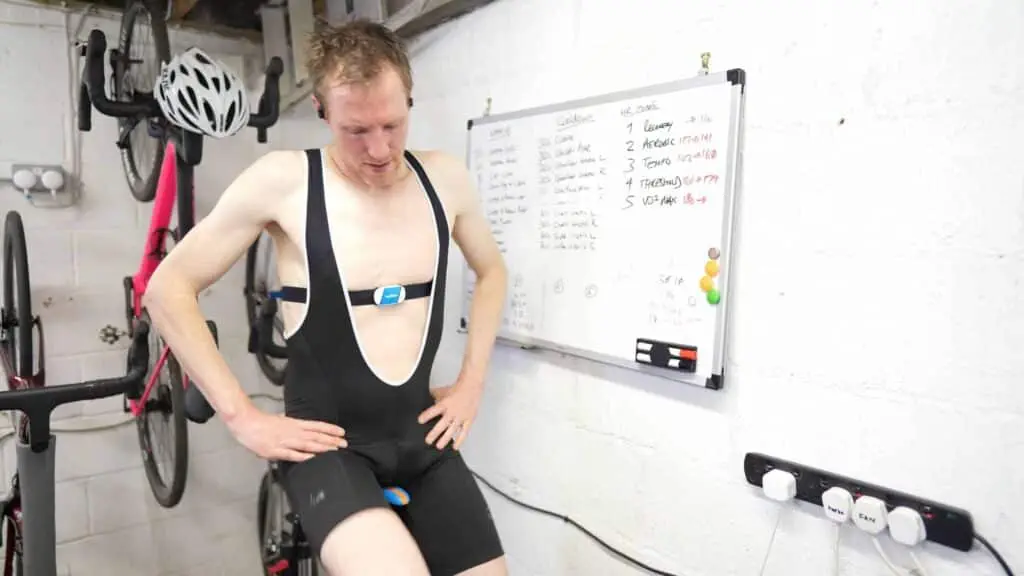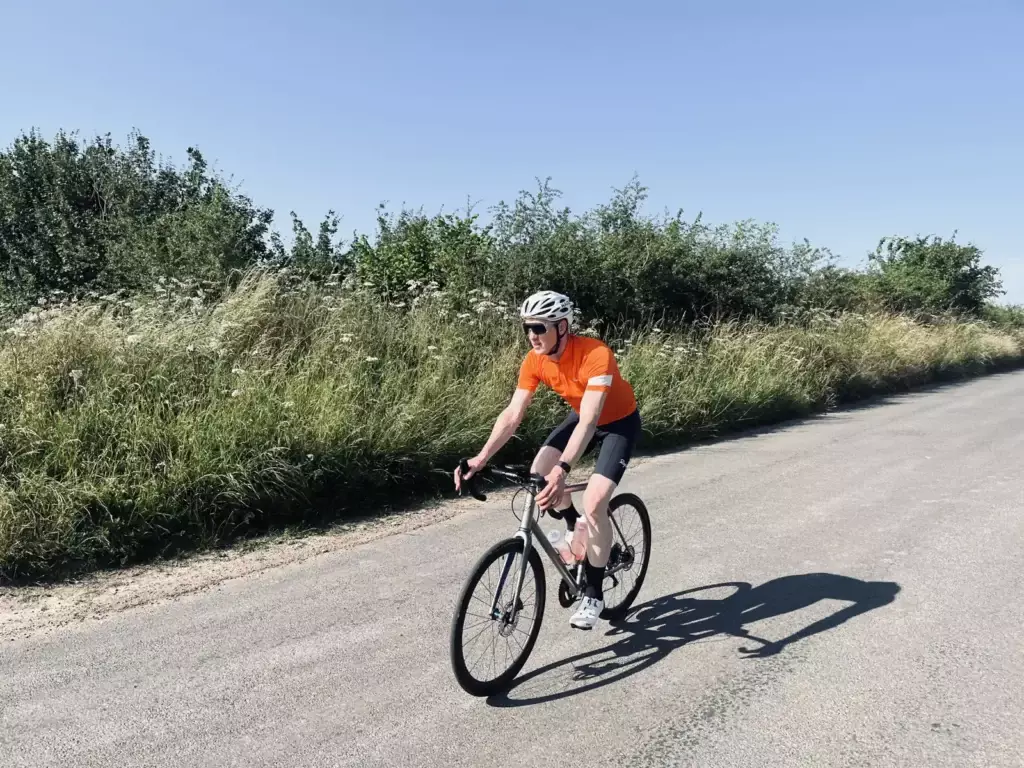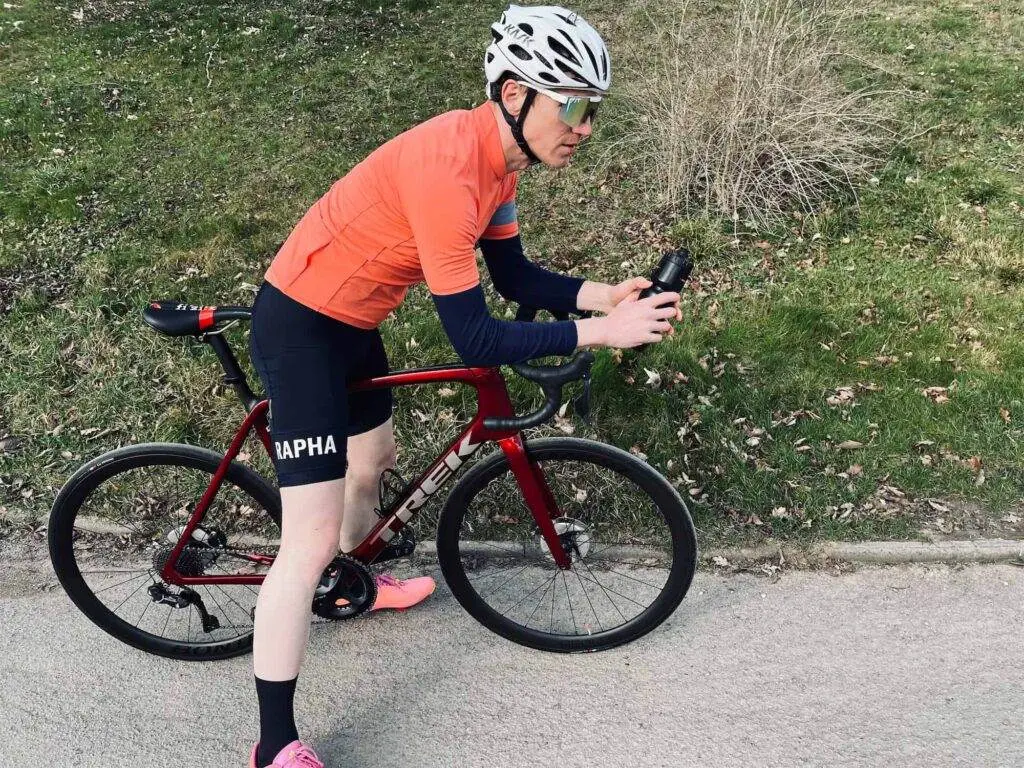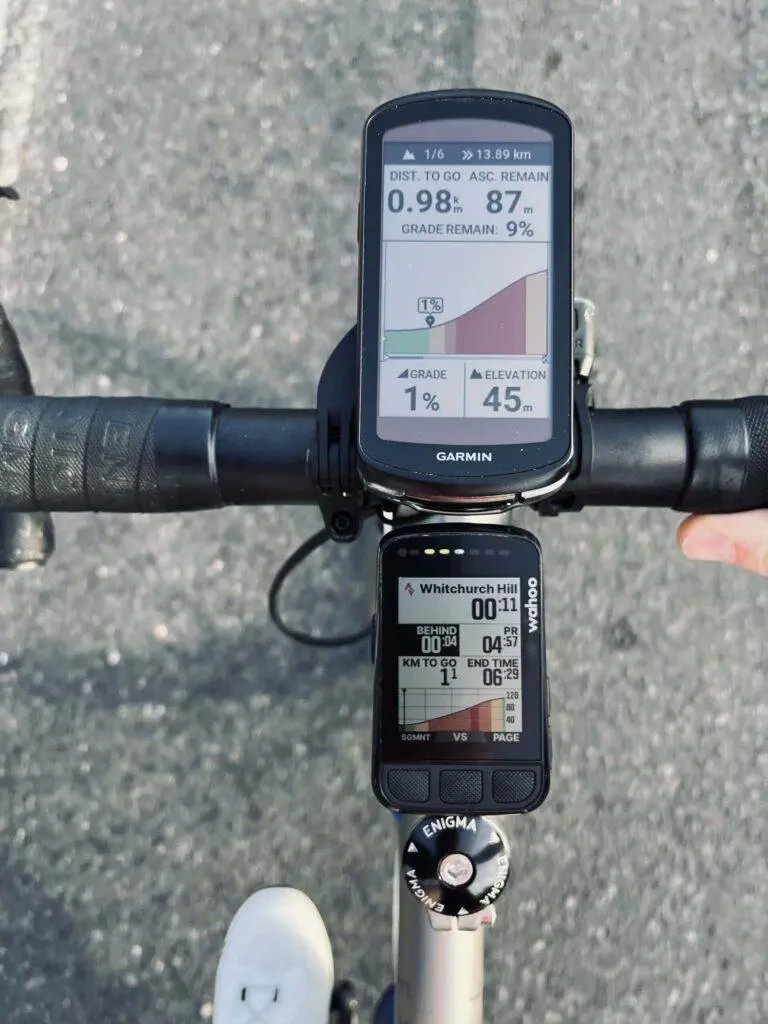Whether you cycle to work for fun or for fitness, you might be asking yourself, how many miles should I bike a day?
If you cycle too much. you face the risk of fatigue or injury. If you aren’t cycling enough, any fitness or weight loss goals you might have set yourself might remain out of reach.
Thankfully, this article will explore all the key factors that go into deciding how much you should cycle every day.
Keep reading to learn more about your recommended mileage and how you can reach your cycling goals!

Key Takeaways
- Consider factors when determining how many miles you should ride, such as your cycling goal, health, and type of bike.
- The beginner cyclist might find themselves cycling between 5 and 10 miles per day.
- Your recommended cycling mileage will depend on whether you’re cycling for transportation, fitness, weight loss, or competition.
- Knowing how many miles to cycle a day will help you tailor your cycling regime and minimise the risk of injury or fatigue.
- Always listen to your body and reward yourself no matter how many miles a day you cycle.
Factors to Consider
When determining how many miles you should bike a day, you’ll have to take in a range of factors. Your unique needs and circumstances will help to dictate a suitable recommended mileage.
I’ve covered the most common factors that will affect how far you should be cycling every day.
Your Cycling Goal
The first thing you must consider when working out a suitable mileage for your cycling is your overall goal.
This will help you set up a training program if required. Alternatively, it can help identify whether you are doing too much. Some of the most common reasons people cycle include:
Commuting
Commuting to and from work provides a great opportunity for people to cycle. They may find it difficult to fit it in around other responsibilities so this can kill two birds with one stone.
Cycling to work will improve fitness, help to save you money, and is a green alternative to driving or public transport.
Your mileage will typically be determined by the distance to your workplace. This can be altered by cycling to bus or train stations if it is too far away.
Recreation
If cycling is just a leisure activity for you, you’ll be able to gauge how far you should be cycling by experience.
You’ll get used to your local bike trail and understand the kind of distances that you’re comfortable with.
Fitness
If you’re cycling for fitness, it’s more important that you take note of distances and performance. This will allow you to monitor your progression and can help you to create cycling routes that will give you a good workout.
Your fitness goals must also be considered. Some people may want to increase their activity, while others may have specific targets in mind.
Competitive cycling will require significant dedication and training schedules. Regular cycling and training in the gym will be needed for a competitive cyclist.

Weight Loss
Many people take up cycling as a way to lose weight. This is a great alternative to running as it is a low-impact form of exercise. This means that people can enjoy bike riding or using a stationary bike to lose a few pounds while minimizing the risk of injury.
How many calories you burn will be dependent on the terrain, your speed, and the type of bike distance you set for yourself.
Cycling for an hour a day will burn around 300 calories for easy to moderate cycle routes taken at an easy pace. More difficult routes and a faster pace will usually burn up to 600 calories.
Competitive racing for an hour will see an impressive 1,000 calories or more being burned in the same period.

Your Health
Bike riding is great exercise and can improve fitness while helping you lose belly fat. However, your general health must also be considered before you take up cycling, and in determining your recommended mileage.
Existing injuries may also impact your physical capabilities. While cycling is a low-impact activity, it is repetitive. Repetitive positions and motions can put a strain on the body so this must be considered when setting your bike distances.
Bike and Terrain
Your bike type and terrain are important factors in bike distances. There are many different types of bikes and each is suited to a specific type of terrain. They differ in size and weight so make long-distance cycling easier or harder depending on the type.
A mountain bike won’t be suited to cycling long distances because of its weight. It is designed for off-road cycling and its heavy components are built to tackle hills with muddy or rocky terrain.
Road bikes are significantly lighter but won’t stand up well to rougher terrain. The road bike is designed for speed and endurance road bikes are great for traveling long distances.
Touring bikes are designed for traveling long distances and carrying equipment. This can be a good choice for commuters that will be sticking to roads and cycle paths.
Cruiser bikes tend to be a bit heavier and require an upright position. They are best suited to short commutes or city cycling with flat terrain. If you ever take a trip to Europe and visit Amsterdam, you’ll see lots of these bikes in action.

Recommended Mileage
Generally speaking, the average cyclist might find themselves cycling between 5 and 10 miles per day. This will usually take between 30 minutes to an hour.
Take a look below to discover recommended mileage for different cycling goals.
Commuting
I’ve already mentioned the excellent benefits of cycling to work. But what kind of distances should you be cycling to work?
You might think that you can comfortably manage long-distance commutes on a bike. These distances might be manageable in your spare time but you must remember you’ll have a day of work ahead of you and the same return journey. You’ll also have to factor in your terrain.
A commute of up to 5 miles is generally regarded as easy. This can typically be completed within 30 minutes at a moderate pace.
Between 5 and 10 miles is a bit more effort but is still manageable. This is likely to take between 30 minutes and an hour.
Beyond 10 miles is regarded as more challenging. Commutes of between 10 and 15 miles will be a bit more difficult with anything beyond 20 miles providing a really difficult challenge.
If you’re considering cycling to work you’ll have to consider the route and terrain. This will determine how challenging it is and how quickly you can do it.
You should also consider the belongings that you will have to take with you. A change of clothes and shower supplies may be necessary. You may also be taking lunch and a drink, as well as any work equipment you need.

Fitness
Cycling is a great way to get fit and is considered to be an excellent aerobic exercise. This means that it improves the body’s blood flow and helps to oxygenate different areas of the body. It is also a great way to improve your cardiovascular fitness.
Cycling is also great for toning your arm muscles and core. However, your lower body will really benefit from a bike workout.
Your leg muscles including your hamstrings and quads will benefit. As will your glutes and calves.
Cycling for between 30 and 60 minutes per day or for 5 to 10 miles is generally a good amount to improve and maintain a strong fitness level.
Cycling for longer distances can be beneficial as you build up your stamina. Your pace and terrain will also determine how strenuous a workout you have. Cycling for 10 miles on hilly terrain will provide a far more difficult exercise than cycling along flat routes.

Weight Loss
Cycling is also an excellent way to lose weight. You should implement cycling as part of a plan to lose weight to ensure you are successful. This should involve a healthy diet and other forms of exercise.
Cycling can be a great alternative to running as excess body weight can put additional stress on the hips, knees, and ankle joints. This is especially true when carrying out high-impact activities like running. Swimming is another excellent way to exercise without putting excess stress on your joints.
If you’re asking yourself “How many miles should I bike a day to lose weight?”, the answer will vary depending on where you are with your plan.
Weight loss should be seen as a long-term goal and a change of lifestyle. For those starting off, it’s important that you ease yourself into your new regime.
Cycling for just 5 miles per day is a great way to start. This will allow you to get used to being active again and shouldn’t exert you too much. Extending your bike ride over time to 10 or 15 miles will improve your results and help you lose belly fat.
Competition
The typical cyclist will cycle between 10 to 15 miles every day. Competitive cyclists will generally log greater distances at a more strenuous pace. This is amped up when training for specific competitions.
Competitive cyclists will average about two hours of training per day. This will fluctuate between competitions and differ depending on the type of cyclist.
Because professionals perform to a much higher standard than the average cyclist, the average distance traveled during these sessions is just shy of 39 miles per day.
Listening to Your Body
Using tech to monitor performance is great for cyclists. You’ll get valuable data about heart rate, elevation, distance, and average speeds.
If you want to ensure you consistently perform well and avoid injury, you must also listen to your body.
Cycling can be an excellent technique for improving fitness and losing weight. When you start to see results, it can be easy to push yourself too far.
The danger of pushing yourself too far is that you might burn yourself out or sustain an injury. This can be a big setback to your fitness regime and make it difficult to get back into the swing of things.
Listening to your body and allowing it to recover after workouts is essential. Warming up and warming down after cycling can help you to avoid strains or muscular injuries.
If you feel something during your bike ride, trying to push through it can cause bigger issues. Easing off and keeping an eye on it will help you avoid a potential injury from developing or worsening.

Tips for Staying Motivated
Motivation is key to reaching your weight loss goal, fitness level, or being prepared to compete.
There are several ways to keep motivated when cycling, including:
Setting Short-term Goals
Short-term goals are a great way to measure your progression and give you something to target. A good short-term goal could also be something as simple as reaching a set amount of miles you want to cycle over the course of a week or month.
Short-term goals should be seen as the stepping stones that will help you reach your long-term goals.

Setting Long-term Goals
Long-term goals should consider your current level and set a target that can be achieved through hard work. This can be competitive or for your own benefit.
It’s important that the long-term goals you set are attainable. You can often use past performance as a benchmark and seek to improve on this.
Rewarding Yourself
When achieving short-term or long-term goals, it’s important that you take the time to acknowledge them.
If you have a social media page dedicated to your cycling, why not create a post detailing the goal and the steps you took to achieve it? It might even encourage someone else!
Tracking Your Performance Data
Tracking your performance and health data will let you see the progress you are making. This can also help if you keep track of the training that aids your performance.

Cycling Different Routes
The route you cycle can become like a habit if you don’t shake things up every so often.
Taking different cycle routes will present different challenges and help you to enjoy your bike rides.
Join a Club or Cycle with Friends
Making some of your rides a more social event can be a great way to stay motivated. You can encourage your friends or club members and use their support to continue when your motivation is low.
Creating a Well-Structured Plan
A well-structured workout routine will let you know exactly what you are doing and when.
Good structure is essential for many people’s workout regimes. It can be easy to get tied up with other responsibilities if firm commitments aren’t made.
Next Steps: Consult with a Doctor or Fitness Professional Before Starting a New Biking Routine
Speaking with a doctor or fitness professional before starting a new biking routine is a great idea.
They will be able to check your current physical well-being and recommend a plan that will ease you into it. This will help you avoid injury or illness.

FAQs
Should I have a rest day in my cycling routine?
Rest days are important as they allow the body to recuperate. Rest days will be an essential part of your training routine to help you avoid injury.
Is regular cycling good for my knees?
Cycling is a great way to build the strength of the muscles around your knee. Biking is also a low-impact exercise and helps with mobility, so it’s seen as a great way to improve knee joint health.
Is it safe to cycle all year round?
Cycling in the winter is typically more hazardous because of poor weather conditions and reduced visibility.
Ensuring you are well seen by wearing bright reflective clothes and using lights is essential. You should also wear safety equipment when cycling.
